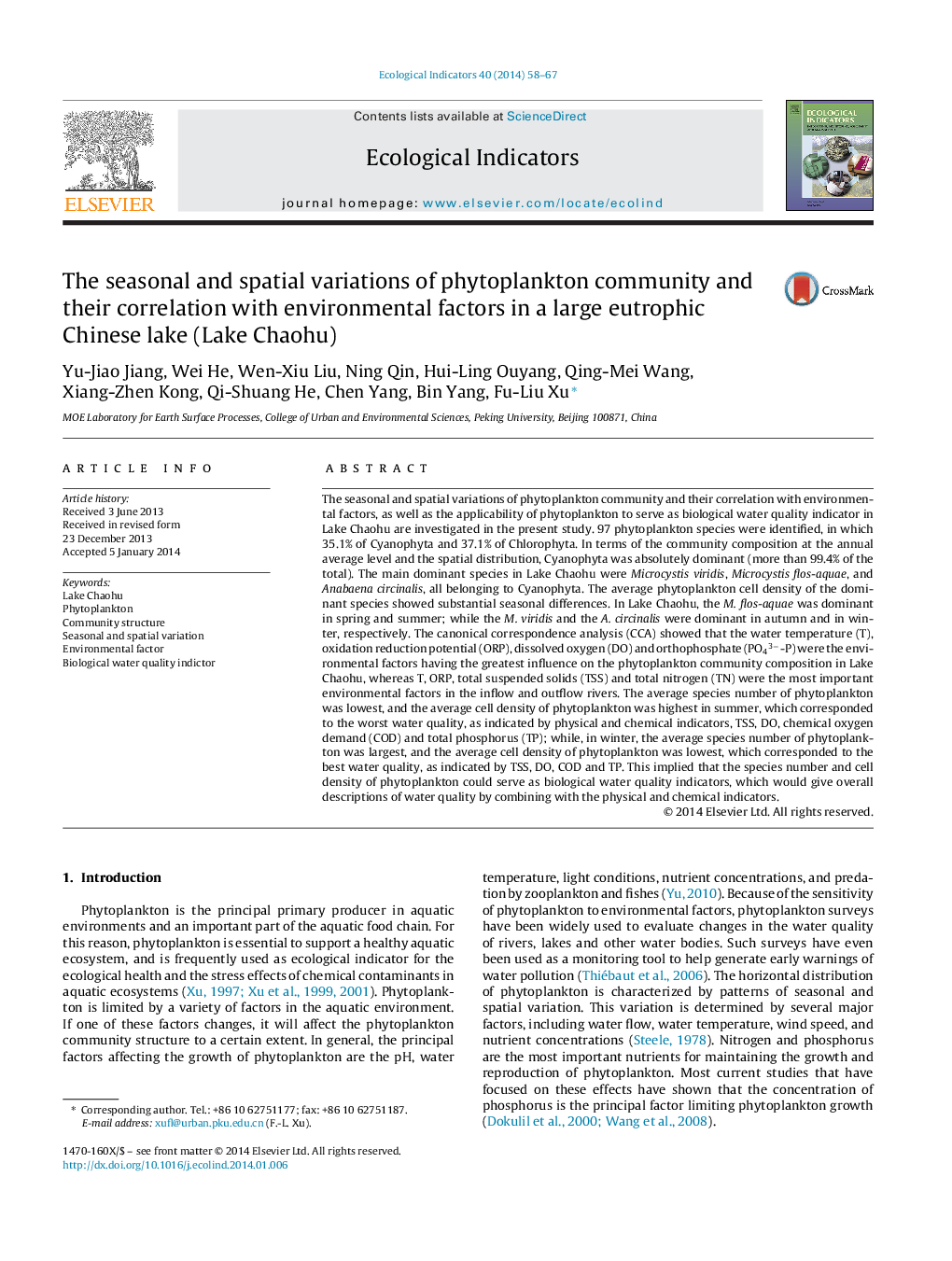| کد مقاله | کد نشریه | سال انتشار | مقاله انگلیسی | نسخه تمام متن |
|---|---|---|---|---|
| 4373231 | 1617161 | 2014 | 10 صفحه PDF | دانلود رایگان |
• The study found a total of 97 species of phytoplankton belonging to 6 phyla and 51 genera.
• Cyanophyta was absolutely dominant at the annual average level and the spatial distribution.
• T, ORP, DO and PO43−-P were with strong influence on the phytoplankton community composition.
• Variations of phytoplankton species number and cell density correspond to changes of water quality.
• Phytoplankton species number and cell density could serve as biological indicators for water quality.
The seasonal and spatial variations of phytoplankton community and their correlation with environmental factors, as well as the applicability of phytoplankton to serve as biological water quality indicator in Lake Chaohu are investigated in the present study. 97 phytoplankton species were identified, in which 35.1% of Cyanophyta and 37.1% of Chlorophyta. In terms of the community composition at the annual average level and the spatial distribution, Cyanophyta was absolutely dominant (more than 99.4% of the total). The main dominant species in Lake Chaohu were Microcystis viridis, Microcystis flos-aquae, and Anabaena circinalis, all belonging to Cyanophyta. The average phytoplankton cell density of the dominant species showed substantial seasonal differences. In Lake Chaohu, the M. flos-aquae was dominant in spring and summer; while the M. viridis and the A. circinalis were dominant in autumn and in winter, respectively. The canonical correspondence analysis (CCA) showed that the water temperature (T), oxidation reduction potential (ORP), dissolved oxygen (DO) and orthophosphate (PO43−-P) were the environmental factors having the greatest influence on the phytoplankton community composition in Lake Chaohu, whereas T, ORP, total suspended solids (TSS) and total nitrogen (TN) were the most important environmental factors in the inflow and outflow rivers. The average species number of phytoplankton was lowest, and the average cell density of phytoplankton was highest in summer, which corresponded to the worst water quality, as indicated by physical and chemical indicators, TSS, DO, chemical oxygen demand (COD) and total phosphorus (TP); while, in winter, the average species number of phytoplankton was largest, and the average cell density of phytoplankton was lowest, which corresponded to the best water quality, as indicated by TSS, DO, COD and TP. This implied that the species number and cell density of phytoplankton could serve as biological water quality indicators, which would give overall descriptions of water quality by combining with the physical and chemical indicators.
Journal: Ecological Indicators - Volume 40, May 2014, Pages 58–67
